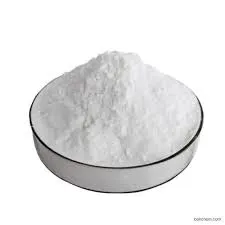- Afrikaans
- Albanian
- Amharic
- Arabic
- Armenian
- Azerbaijani
- Basque
- Belarusian
- Bengali
- Bosnian
- Bulgarian
- Catalan
- Cebuano
- Corsican
- Croatian
- Czech
- Danish
- Dutch
- English
- Esperanto
- Estonian
- Finnish
- French
- Frisian
- Galician
- Georgian
- German
- Greek
- Gujarati
- Haitian Creole
- hausa
- hawaiian
- Hebrew
- Hindi
- Miao
- Hungarian
- Icelandic
- igbo
- Indonesian
- irish
- Italian
- Japanese
- Javanese
- Kannada
- kazakh
- Khmer
- Rwandese
- Korean
- Kurdish
- Kyrgyz
- Lao
- Latin
- Latvian
- Lithuanian
- Luxembourgish
- Macedonian
- Malgashi
- Malay
- Malayalam
- Maltese
- Maori
- Marathi
- Mongolian
- Myanmar
- Nepali
- Norwegian
- Norwegian
- Occitan
- Pashto
- Persian
- Polish
- Portuguese
- Punjabi
- Romanian
- Russian
- Samoan
- Scottish Gaelic
- Serbian
- Sesotho
- Shona
- Sindhi
- Sinhala
- Slovak
- Slovenian
- Somali
- Spanish
- Sundanese
- Swahili
- Swedish
- Tagalog
- Tajik
- Tamil
- Tatar
- Telugu
- Thai
- Turkish
- Turkmen
- Ukrainian
- Urdu
- Uighur
- Uzbek
- Vietnamese
- Welsh
- Bantu
- Yiddish
- Yoruba
- Zulu
Dec . 19, 2024 04:38 Back to list
Exploring the Efficacy and Application of Injectable Enrofloxacin in Veterinary Medicine
Enrofloxacin An Overview of Its Use and Implications in Veterinary Medicine
Enrofloxacin is a synthetic antibiotic belonging to the fluoroquinolone class, widely recognized and utilized in veterinary medicine for its broad-spectrum antibacterial properties. Originally approved for use in veterinary settings, this drug has played a critical role in treating a variety of bacterial infections in dogs, cats, and livestock. Its mechanism of action involves inhibiting bacterial DNA gyrase and topoisomerase IV, essential enzymes for bacterial DNA replication, transcription, and repair. This unique mode of action makes enrofloxacin effective against both Gram-negative and some Gram-positive bacteria.
Enrofloxacin An Overview of Its Use and Implications in Veterinary Medicine
Despite its benefits, the use of enrofloxacin is not without controversy and concern. One significant issue is the development of antibiotic resistance. The overuse or inappropriate use of enrofloxacin can lead to the selection of resistant bacterial strains, posing a risk not only to animal health but potentially to human health as well. Zoonotic transmission of resistant bacteria is a growing concern, emphasizing the need for judicious use of antibiotics in veterinary practice.
inj enrofloxacin

The potential side effects of enrofloxacin in animals are also an important consideration. While it is generally well-tolerated, some adverse effects can occur, including gastrointestinal disturbances, neurological effects, and, in rare cases, damage to cartilage in growing animals such as puppies. As a result, veterinarians must weigh the benefits against potential risks when prescribing enrofloxacin, particularly in young and developing animals.
Furthermore, the regulatory framework surrounding the use of enrofloxacin has evolved, reflecting growing awareness of its implications for antibiotic resistance. In 2015, the U.S. Food and Drug Administration (FDA) introduced guidelines aimed at reducing the unnecessary use of antibiotics in livestock, thereby promoting the responsible use of enrofloxacin in food-producing animals. These guidelines emphasize the importance of veterinary oversight and encourage practitioners to prioritize alternative treatments whenever feasible.
In light of these challenges, the veterinary community is increasingly adopting strategies to mitigate the risks associated with enrofloxacin use. This includes implementing culture and sensitivity testing to guide antibiotic selection, reserving enrofloxacin for cases where other treatments have failed, and educating pet owners about the responsible use of antibiotics. Proactive measures are aimed at reducing the incidence of resistance while ensuring effective treatment of bacterial infections.
In summary, enrofloxacin stands out as a crucial tool in veterinary medicine due to its broad-spectrum action and effectiveness against various bacterial infections. However, its use carries significant responsibilities. The dual challenge of treating infections while preventing antibiotic resistance necessitates a careful, informed approach by veterinarians. By embracing principles of responsible antibiotic use and staying abreast of emerging guidelines, the veterinary community can maximize the benefits of enrofloxacin while safeguarding the future of effective antimicrobial therapies. Ultimately, striking a balance between therapeutic necessity and the broader implications of antibiotic resistance is essential for maintaining both animal and public health in an increasingly interconnected world.
-
Guide to Oxytetracycline Injection
NewsMar.27,2025
-
Guide to Colistin Sulphate
NewsMar.27,2025
-
Gentamicin Sulfate: Uses, Price, And Key Information
NewsMar.27,2025
-
Enrofloxacin Injection: Uses, Price, And Supplier Information
NewsMar.27,2025
-
Dexamethasone Sodium Phosphate Injection: Uses, Price, And Key Information
NewsMar.27,2025
-
Albendazole Tablet: Uses, Dosage, Cost, And Key Information
NewsMar.27,2025













